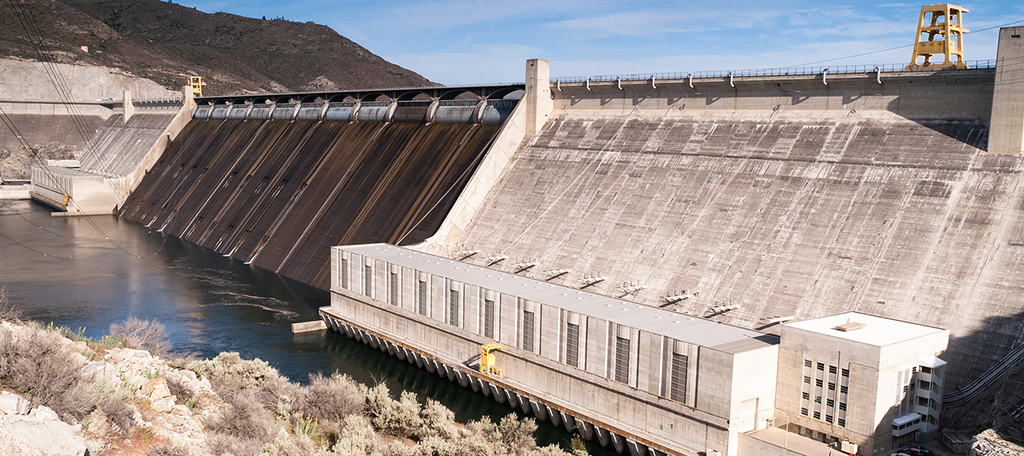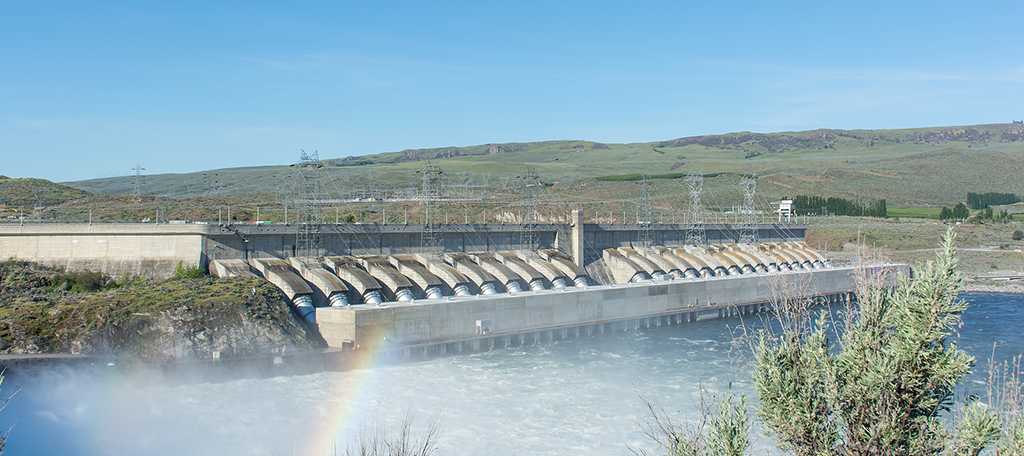The most reliable renewable energy source, by far, is hydroelectricity. And the United States is home to some of the biggest hydroelectricity plants in the world. These plants are engineering wonders and can provide clean power to thousands of homes.
What Are Hydroelectricity Plants?
A hydroelectricity plant converts the potential energy of moving water into mechanical energy, which can then generate electricity. There are three main types of hydropower plants that include impoundment, diversion, and pumped storage.
Impoundment is the most common type of hydropower plant. It consists of a dam that blocks the flow of water or “impounds” the water. The water then flows downward and turns a turbine to generate electricity.
The diversion or run-of-river approach does not require a dam. Instead, running water in a river is diverted to an artificial water canal. On top of providing energy by spinning a turbine the water is also commonly used for irrigation.
The last type is pumped storage, and it is a bit more complicated. Water is pumped up to a reservoir that is located at a higher elevation. The water can then flow to a lower elevation where it can turn a turbine. This method has a huge catch, it costs energy to move the water.
The Biggest Hydroelectricity Plants in the United States
1. Grand Coulee Dam

The Grand Coulee Dam is the largest hydropower plant in the United States. It has a maximum capacity of 6,809 MW, and it generates about 21 billion kWh.
In terms of physical size, it is 5,200 feet long and 550 feet tall. The construction took place between 1933-1941 and cost $300 million at the time. The dam has seen multiple additions throughout the years.
To put that into perspective, it would cost over $5.5 billion dollars today.
2. Bath County Pumped Storage Station
The Bath County Pumped Storage Station is not only the largest pumped-storage hydroelectricity plant in the world, it is commonly referred to as the largest battery in the world.
This hydropower plant consists of two dams. The Lower Reservoir Dam is 135 feet high and 2,400 feet long, and the Upper Reservoir Dam is 460 feet high and 2,200 feet long.
It has a maximum capacity of 3,003 MW, which powers 750,000 homes.
3. Chief Joseph Dam

The Chief Joseph Dam is the largest hydropower producing dam operated by the US Army Corps of Engineers. It is also the second-largest hydropower dam in the United States.
Chief Joseph has a maximum capacity of over 2,000 MW, which equates to $450 million dollars of electrical energy every year. The dam itself is 5,962 feet long and 236 feet high.
The dam features 27 turbines that are the size of a house.
Still Room For More Hydropower
Hydropower has plenty of room to grow in the United States and that’s because the majority of dams built do not generate electricity. That’s right, just because you see a dam, doesn’t mean it has turbines.
Instead, irrigation and flood prevention are the driving factors behind the construction. In fact, a report from 2012 found that there are 12,000 MW of potential hydroelectricity available from existing dams in the United States.
Thus, it can play a huge role in lowering our reliance on oil by expanding what these dams can do.


